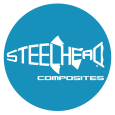Since a compsite overwrapped pressure vessel (COPV) stores gas at high pressure, the design of the vessel structure needs to be treated as fracture critical. This means that the design calculations and tests need to verify that the vessel will not fail catastrophically during its intended life span. During its service life, the COPV is subjected to several pressurization and de-pressurization cycles. Surface flaws in the liner can grow over pressure cycles and form a through-crack that allows for a leak path of the contained fluid. This is a much benign failure mode compared to a catastrophic rupture of the pressure vessel. For operational safety, it is desirable to have this Leak Before Burst (LBB) failure mode whereby crack stability is maintained in the liner even though the part-through crack grows and becomes a through-crack.
One of the biggest differentiators between a Type 3 (metal lined) and Type 4 (plastic lined) composite pressure vessel is that the former allows for a precise and predictable LBB failure mode. Fracture mechanics based analytical methods are mature and well established for metals such as 6061-T6 Aluminum typically used for liners, as opposed to polymeric materials. Steelhead Composites has been very successful in using such analytical methods to estimate the safe life of the COPVs and verify it through testing. Designs also account for both partial and full pressure cycles as typically required by international design standards such as GTR-13/EC-79. Theoretical methods for crack growth analysis are most always limited to simple geometries and loading conditions. To represent real-world performance, Steelhead uses advanced finite element analysis for modeling the composite pressure vessels and crack propagation analysis in the Aluminum liners. Instead of fabricating and testing expensive COPV protoypes, models can be very effective in the development phase to screen design variations. Designs are optimized by altering the composite structure and loading conditions and studying their effect on crack growth in liners over the vessel life. This helps Steelhead to reduce the time from design inception to product certification and more importantly to ensure safety of these complex products during operation.



